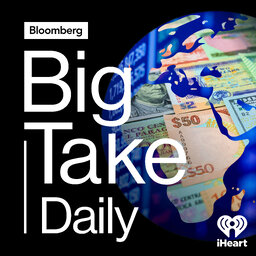All the Eyes, Ears and Algorithms Focused On the Fed
At the end of last year, the Chair of the US Federal Reserve hinted at cutting interest rates – staving off an expected recession. It was a welcome surprise for many people watching the markets. Five months into 2024, he’s poised to pivot again.
On today’s Big Take, host David Gura talks with Fed editor Kate Davidson and Bloomberg Economics’ Anna Wong about the Fed’s latest moves and what to expect from this week’s Federal Open Market Committee Meeting.
Further Listening: The Federal Reserve's Tricky Economic and Political Terrain, Explained
 Big Take
Big Take


